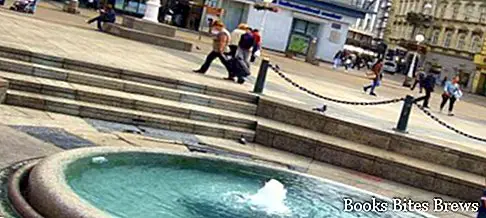What to see in Zagreb in one day, itinerary including the main monuments and places of interest, including Cathedral and Museum of Broken Hearts.
Tourist information
Capital of Croatia, Zagreb is located at the foot of the Medvednica hill, on the north bank of the Sava river.
The Zagreb area has been inhabited since prehistoric times.
From ancient times, the well-preserved remains of Andautonia reach us, located where the village of Scitarjevo is located, near Zagreb, which testify to the Roman presence in this area.
In the eleventh century, the king of Hungary Ladislao founded a bishopric on the hill of Kaptol and, at the same time, on the nearby hill of Gradec, another inhabited nucleus independent of the bishop originated.
After the Mongol invasion of 1242, King Bela IV made Gradec a free city to attract craftsmen and merchants, giving a significant boost to the growth of the town.
The two settlements Gradec and Kaptol, after spending over two hundred years in mutual rivalry, joined together in the seventeenth century, giving rise to a single city, which took the name of Zagreb.
Today Zagreb is made up of an upper part, comprising the historical nuclei of Gradec and Kaptol, and a lower part, Donji Grad, which is of more recent origin.
Gradec is also called Gornji grad, which means upper town.
What see
The central part of the city is Bano Josip Jelacic square, located at the base of Gradec and Kaptol, near the Mandusevac spring.
The square, which in the past was the headquarters of the markets, today is a popular meeting place, it also hosts various demonstrations and popular festivals, in the evocative scenario created by the various buildings that overlook it, dating back to the beginning of the nineteenth century.
Recommended readings- Istria: what to see in the largest Adriatic peninsula
- Meleda (Croatia): what to see on the island
- Korcula (Croatia): what to see on the island of Dalmatia
- Makarska (Croatia): what to see on the Riviera
- Bol, Supetar and Sutivan (Croatia): what to see on the island of Brac
At the base of the Mandusevac fountain, the spring flows which, until the end of the nineteenth century, supplied the city with water.
Along the steep via Radiceva you reach the upper town Gornji Grad, passing through the Stone Gate, the only ancient gate of the city, where the icon of the Madonna is found, which miraculously saved itself from the fire of the ancient gate tower , which occurred in 1731.
This sacred image of the Madonna and Child, which is highly venerated by the faithful, is celebrated on May 31 of each year.
In the center of the Upper Town, in the homonymous square, stands the Church of San Marco in late Gothic style, with a roof made of white, red and light blue polychrome glazed tiles, characterized by the coats of arms of the Habsburg Kingdom of Croatia and of the city of Zagreb.
In the district of Kaptol there is the Cathedral, which constitutes one of the city symbols, dedicated to the Assumption of the Blessed Virgin Mary and dating back to the 11th century, corresponding to the period immediately following the foundation of the city.
The building shows different architectural styles, resulting from the many changes that have affected it over the centuries, up to the current shape, including two towers visible from every part of the city.
The defense walls with the towers around the cathedral were built in the sixteenth century as a defense against attacks by the Turks.
Near the Cathedral is the Dolac market, the most characteristic of the many open-air markets in which the city is rich.
Via Tkalciceva is a very lively street in Zagreb, full of traditional shops and restaurants.
This road is located along the path where the Medvescak stream once flowed, which divided the towns of Gradec and Kaptol.
Towards the end of the nineteenth century, due to the pollution caused by the production activities carried out in the area, its coverage was decided to make room for the new road.
The via Ponte di Sangue takes its name from the bridge that was the backdrop for the clashes between Gradec and Kaptol.
The blood bridge connecting the two settlements was torn down in 1899.
Among the museums to visit in Zagreb is the Archaeological Museum, founded in 1846 and rich in precious collections, including the so-called Etruscan Book of the Mummy of Zagreb, corresponding to the longest Etruscan text found to date, consisting of a band of linen 13 meters long and 40 centimeters high, mysteriously arrived in Egypt and cut into strips, to then be used improperly to bandage a mummy, before being purchased by a Croatian collector in 1848.
The Mimara Museum, inaugurated in 1987, is housed in a neo-Renaissance style building, located in Roosvelt square and whose construction dates back to the late nineteenth century.
The museum was born thanks to the important donations of highly prized works of art by Ante Topic-Mimara, a Croatian collector.
The exhibition includes works from the ancient world, European collections from the Middle Ages to the twentieth century, and works of art from the Orient and the Middle East.
The Museum of Broken Hearts, also called Museum of Finite Relationships or Broken Hearts, is a very innovative and unique exhibition, born as a traveling event and then became stable.
In this museum place are preserved the objects that have been part of a lost love.
Those who want to get rid of their memories can donate them to the museum, to make them part of the collection.




